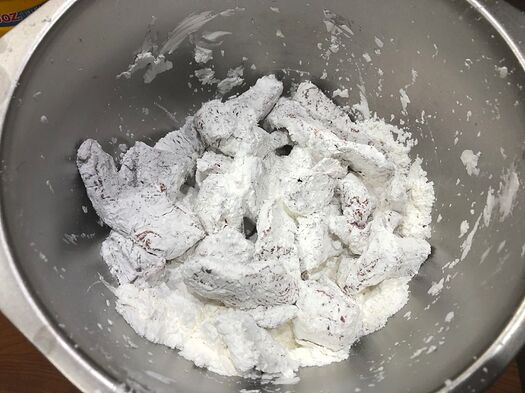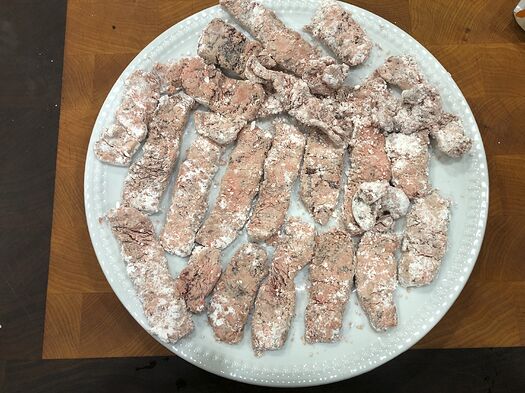Question. I’ve seen recipes that call for a short sit in baking soda and then rinse off and cook. Others say to let it sit for a bit in cornstarch and then cook without rinsing off. When would you use one or the other. And do the two methods have different effects on the texture of the cooked meat? I do baking soda because I can’t really imagine that cornstarch would change the meat’s texture…? Would thicken the sauce of course but I can do that with a slurry.
I use baking soda, but don’t bother rinsing it off. My velveting is strictly for Chinese recipes, so I use a bit of baking soda and soy sauce as a short marinade (less than 30 minutes, usually). The soy sauce is really just a medium to help distribute the baking soda more evenly. I’d guess I use about a quarter teaspoon or less of baking soda per pound of meat, and perhaps a tablespoon of soy sauce, but I’ve never measured either one.
I’ve seen and do a tsp of soda per lb with about 1-2 T water. Mix it around. I rinse bc I don’t want the flavor of the soda. The soy etc goes into the sauce. I also only velvet for Chinese stir fries.
I used baking soda for velveting. Corn starch for frying chicken, a technic to insulate the chicken, prevent drying out while still allowing the surface to brown.
My brother uses baking soda and soy sauce. I use corn starch and soy sauce. I think they work about the same, to hold in moisture and a little flavor from the soy sauce.
This is my bible for velveting beef.
Cornstarch and something for flavor depending on the recipe.
Not baking soda, I can taste it in the end product and I don’t like the taste.
I’m a big fan of corn starch velveting for beef stir fry -
slice up a good steak
generous corn starch ‘bath’
allow to mellow, ready for the fry
crispy tasty add-like-crisp-noodle
I use them both - the small amount of baking soda also helps promote browning. I do believe I notice a difference between velveted and non-velveted meat - but I’ve never done a true scientific test.
For velveting you need something with basic pH to tenderize the meat when marinating, so you could either use baking soda or egg white to increase the pH. Just using cornstarch won’t give you the pH and won’t tenderize the meat but helps with the mouthfeel when cooked. And velveting also includes “passing through” oil or water briefly before using in the wok
This is a good read on the whys and wherefores of velveting.
Also an interesting compilation and discussion of various western interpretations of the Chinese technique.
(“…of course, it’s that alkaline component that seems to get a lot of play on the English language internet. Whenever you see a YouTube video or TikTok advertising “the secret to a Chinese restaurant stir fry!”, odds are good that said secret is going to be… baking soda.”)
A dash of baking soda, salt & ice water is a great way to perk up not-so-perfect shrimp.
I use baking soda, but not a lot. You almost think it’s not enough, but toss it around with the chicken and let it sit before cooking, and it really makes a difference.
I’ve never heard of rinsing it off pre-cooking.
I use baking soda for velveting. I didn’t know one could use cornstarch for velveting. I do use cornstarch when I want krispy-kronchiness without the tackiness of flour.
Cornstarch is perfect for frying calamari.
There’s barely anything I fry, so perhaps cornstarch on the meat and not in the sauce is not the play for me.
At our restaurants we do both techniques.
Baking soda, then rinse, as well as coating the meat in cornstarch.
The two techniques provide different textures to the meat. Baking soda makes the meat tender and juicy, and corn starch makes the meant silky and smooth.
You can, and should do both.
Tenderize with baking soda first, rinse the meat, then coat with corn starch slurry, and then cook (or stir fry)





